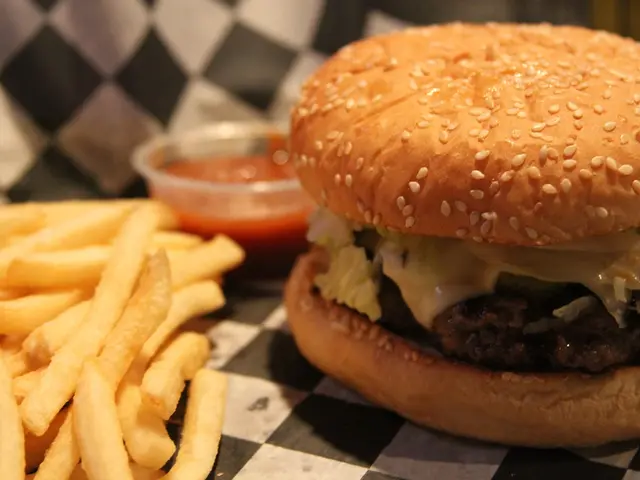Giant Python Devours Entire Wallaby in Australia
Eating Like a Python: One Giant Meal, No More Hunger for Months
Are you tired of those meals that leave you bloated and craving another one just a few hours later? Imagine consuming one monster meal and not needing to think about food for months! Now, that's living!
A fortunate (or unlucky, depending on your perspective) olive python residing in Australia's Northern Territory has gotten a taste of this unconventional lifestyle. A park ranger at Nitmiluk National Park, Paul O'Neill, captured jaw-dropping images of this python feasting on an entire wallaby.
The images are nothing short of incredible, as the snake's bulging body struggles to contain its meal. And no, your eyes aren't playing tricks on you—it really did devour a wallaby whole!
Digesting such a colossal meal won't happen overnight. According to experts, it'll take this lucky lad at least a week to process it, and he will likely lie low for a month, preserving his energy for the long haul.
But here's the fascinating part—the python won't need to hunt down more food for several months, maybe even half a year! Isn't that mind-boggling?
Imagine having one big feast and not having to worry about cooking or grocery shopping for months. Sounds like a dream, doesn't it?
Giant Feasts: Adapting to Survive
If you think this sounds like pure laziness, reconsider. This "feast-or-famine" strategy is an ingenious survival mechanism.
Unlike mammals, which require a constant energy supply to keep their systems running, reptiles have much slower metabolisms, allowing them to go without food for extended periods.
When they do eat, their bodies undergo remarkable changes to process the meal efficiently. Their heart, liver, and intestines expand significantly, enabling them to break down their food swiftly. Within a few days, their metabolism skyrockets up to 40 times higher than usual to handle the digestion. Once the meal is fully digested, everything returns to normal, until the next giant feast.
Beyond the Viral Feast: The Adaptability of Olive Pythons
This spectacular eating moment highlights the incredible adaptability of these reptiles. From their expanding organs to their sluggish metabolic processes, they've evolved a survival system that leaves most animals scratching their heads in bewilderment.
It's interesting to contemplate living off a single meal for months, but let's be honest—giving up daily gastronomic adventures probably isn't something most of us are eager to try.
However, this remarkable ability to fast for extended periods is just one of the many adaptations these fascinating creatures possess. Whether you find their methods fascinating or simply bizarre, there's no denying that olive pythons are at the top of the food chain for a reason.
Check out the full album of images from this record-setting feast at ABC News**.
Additional Insights:
Olive pythons, like other large constrictor snakes, have evolved to survive extended periods between meals. This ability stems from several physiological and metabolic adaptations, such as:
Metabolic and Physiological Adaptations
- Low metabolic rate: Olive pythons have a low basal metabolic rate, minimizing energy use between meals.
- Surge and fast metabolism: Increases during digestion to handle large meals, then rapidly decreases to conserve energy.
- Efficient fat storage: Stored energy reserves last for months, ensuring survival during periods without additional food intake.
- Reduced activity: Minimized movement reduces energy expenditure between feedings.
Despite their impressive ability to fast, olive pythons are not alone. Other large constrictor snakes, such as Burmese and reticulated pythons, share similar physiological adaptations, enabling them to thrive in environments with scarce or irregular prey populations.
Science reveals another fascinating aspect of the olive python's health-and-wellness routine, as its fitness-and-exercise regimen revolves around relying on one colossal meal instead of numerous small ones for months. This entails metabolic and physiological adaptations that conserve energy, ensuring its survival in Australia's Northern Territory.







